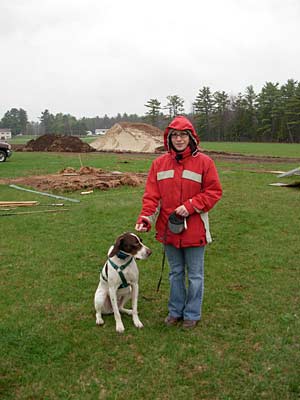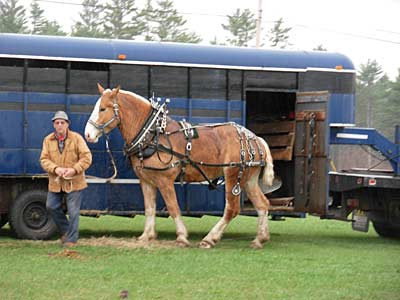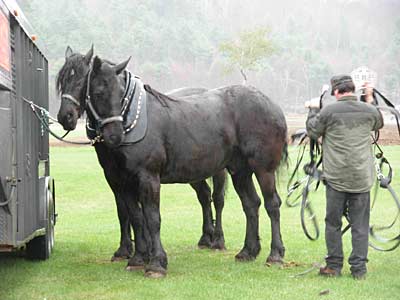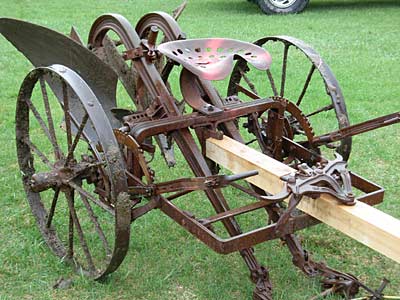Matt and I went out to get some lumber to repair the deck at The Red Mill in South Casco. On the way we noticed some horses plowing the field at Watkins’ farm behind the frozen custard stand.
The Red Mill turned out to be a couple of hundred yards off the main road, down a long dirt driveway. It’s an old fashioned sawmill/lumber yard with several, widely separated, sheds with different sizes of lumber. There are muddy, rutted dirt driveways between the sheds. It makes even National Lumber in Newton look like a cleaned up, Disneyland version of a lumber yard, to say nothing of what it makes the lumber department of Home Depot look like. Besides the lumber we need for the deck, we got four rough cut 1 by four inch by eight foot boards at fifty cents each. We thought, even if we do nothing but build a bench out in the woods, it’s worth two bucks.
On the way back we pulled into the Watkins Farm driveway. There were several horse trailers there and several teams of draft horses pulling the kind of plows you usually only get to see somewhere like the farming museum at the Fryeburg fair. It turned out to be a plowing demonstration by the Farmers Draft Horse Mule and Pony club. We only looked for long enough to realize that we’d better get Arlene and Anne and our cameras and come back.
By the time we got back it was raining hard enough, and there was a small enough audience, that the farmers were starting to unharness the horses, load them back on the trailers, and call it a day. But not before getting some pictures and talking with a couple of the club members.
Anne and Dozer, horse-plowed furrows behind her. —

A Belgian draft horse —

Percherons. They were being unharnessed between the time I pushed the shutter button and the time the camera was good and ready to take the picture. If you look closely maybe you can see some of the rain falling. Maybe not. I could in the full-resolution original. —

a vintage horse-drawn plow. I asked someone about the adjustments and controls for the plow. You can adjust the depth of the furrow with one of the levers, and if you push down some pedal you lock the plow to the wheels so the forward momentum of the rig pulls the plow up out of the ground — you don’t have to lift it yourself — for turning at the end of the furrow, for instance. None of that iron just happens to be there; that’s good 19th century mechanical engineering, pals.
